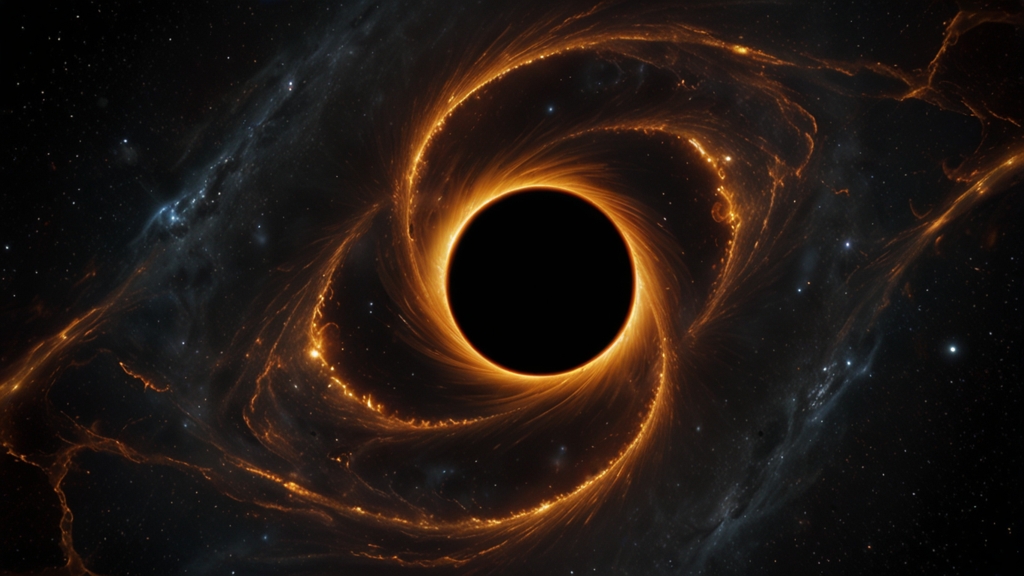The Science Behind Black Holes: What Happens Inside
Black holes, one of the most enigmatic and intriguing phenomena in the universe, continue to captivate the imagination of scientists and laypeople alike. These cosmic giants, which exert a gravitational pull so strong that not even light can escape, have long been the subject of intense study and speculation. Understanding what happens inside a black hole requires a deep dive into the realms of general relativity, quantum mechanics, and astrophysics.
Formation of Black Holes
Black holes form when massive stars exhaust their nuclear fuel and can no longer support the gravitational force pulling inward. As these stars collapse, they condense into a singularity - a point of infinite density. Surrounding this singularity is the event horizon, a boundary beyond which nothing can escape the gravitational pull of the black hole.
"The event horizon is often described as the 'point of no return.' Once an object crosses this threshold, it is destined to fall into the singularity, where the laws of physics as we know them cease to apply." - Dr. Neil deGrasse Tyson
The Anatomy of a Black Hole
A black hole consists of two main parts: the singularity and the event horizon. The singularity is the core of the black hole, where the mass is concentrated into an infinitely small point. The event horizon, meanwhile, is the "surface" of the black hole, marking the boundary where the escape velocity exceeds the speed of light.
The region between the singularity and the event horizon is called the ergosphere, where space-time is significantly distorted. In rotating black holes, the ergosphere can cause objects to gain energy and even escape the black hole's grasp, a phenomenon known as the Penrose process.
What Happens Inside
Once an object crosses the event horizon, it experiences extreme tidal forces. This process, often referred to as "spaghettification," stretches objects vertically and compresses them horizontally, due to the steep gravitational gradient.
"Falling into a black hole would be a one-way trip. As you get closer to the singularity, time itself would stretch out, and you would experience extreme tidal forces that would eventually tear you apart." - Stephen Hawking
The interior of a black hole is a domain where our current understanding of physics breaks down. Classical general relativity predicts that once inside, all objects inexorably move toward the singularity. However, quantum mechanics suggests that other phenomena, like Hawking radiation, might play a role in describing the behavior of matter and energy within black holes.
Hawking Radiation
Stephen Hawking proposed that black holes are not entirely black; they can emit radiation due to quantum effects near the event horizon. This phenomenon, known as Hawking radiation, results from particle-antiparticle pairs forming at the event horizon. One particle falls into the black hole while the other escapes, causing the black hole to lose mass over time.
While the mathematical derivation of Hawking radiation is well-accepted, direct observational evidence remains elusive. If confirmed, Hawking radiation would imply that black holes could eventually evaporate entirely, providing a potential reconciliation between general relativity and quantum mechanics.
Theoretical Models and Future Research
Researchers continue to explore various theoretical models to describe the intricate details of black holes. One leading theory suggests that the singularity might be a "fuzzball," a region where strings replace the concept of a point mass. Other models propose that information falling into a black hole could be preserved on the event horizon, offering a solution to the black hole information paradox.
"Advances in theoretical physics and observational astronomy will someday provide a clearer picture of black holes, helping us unlock the mysteries they hold." - Kip Thorne
With advances in technology, including the Event Horizon Telescope that captured the first image of a black hole, scientists are hopeful that we will gain new insights into these fascinating celestial objects. As our understanding evolves, black holes may reveal more about the fundamental nature of the universe itself.
Conclusion
The science behind black holes remains one of the most exciting and challenging areas of modern astrophysics. While we have made significant strides in understanding their formation, structure, and potential radiation, much about what happens inside a black hole remains shrouded in mystery. Ongoing research and future technological advancements promise to shed light on the hidden internal workings of these cosmic enigmas, deepening our knowledge of the universe.







